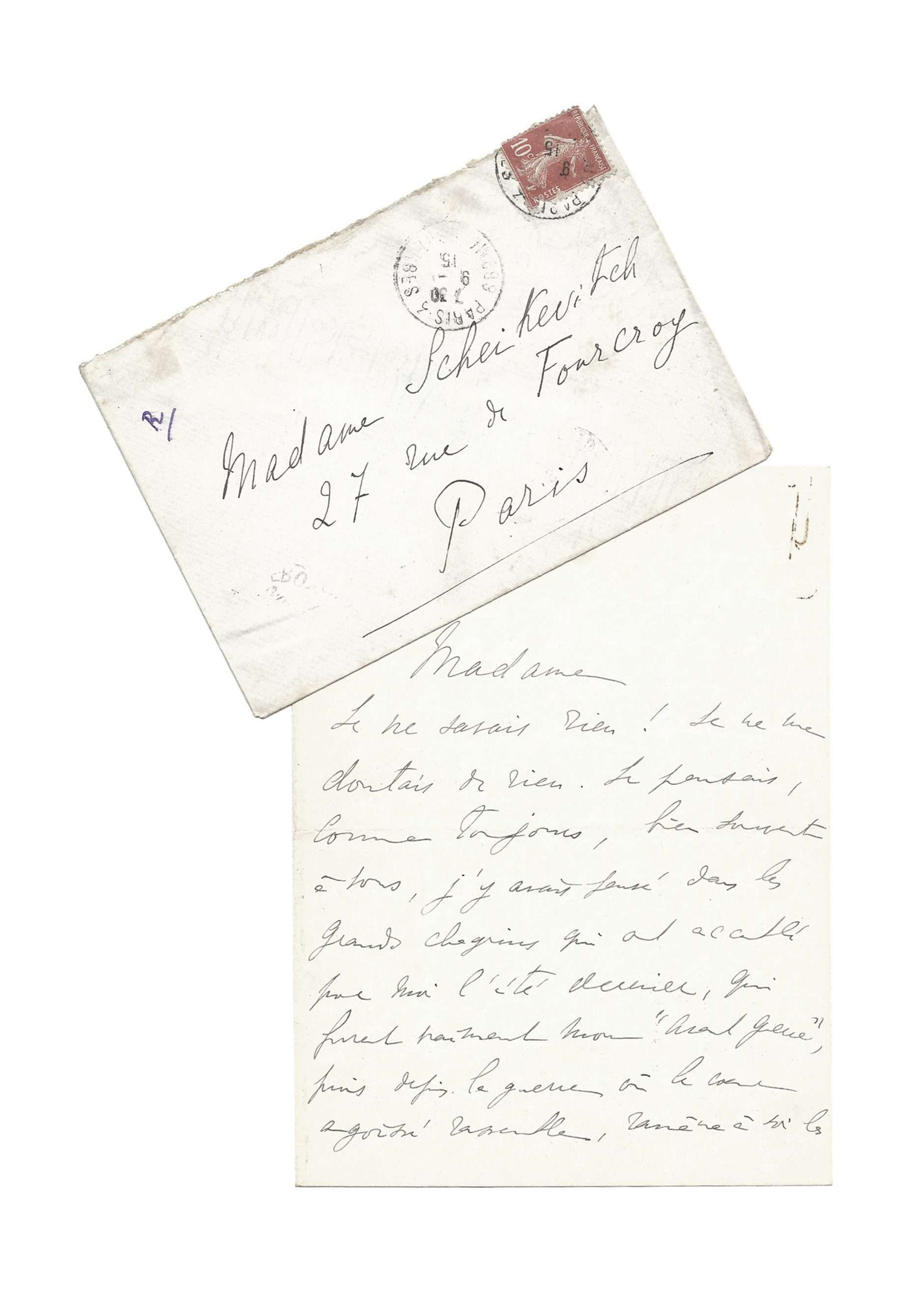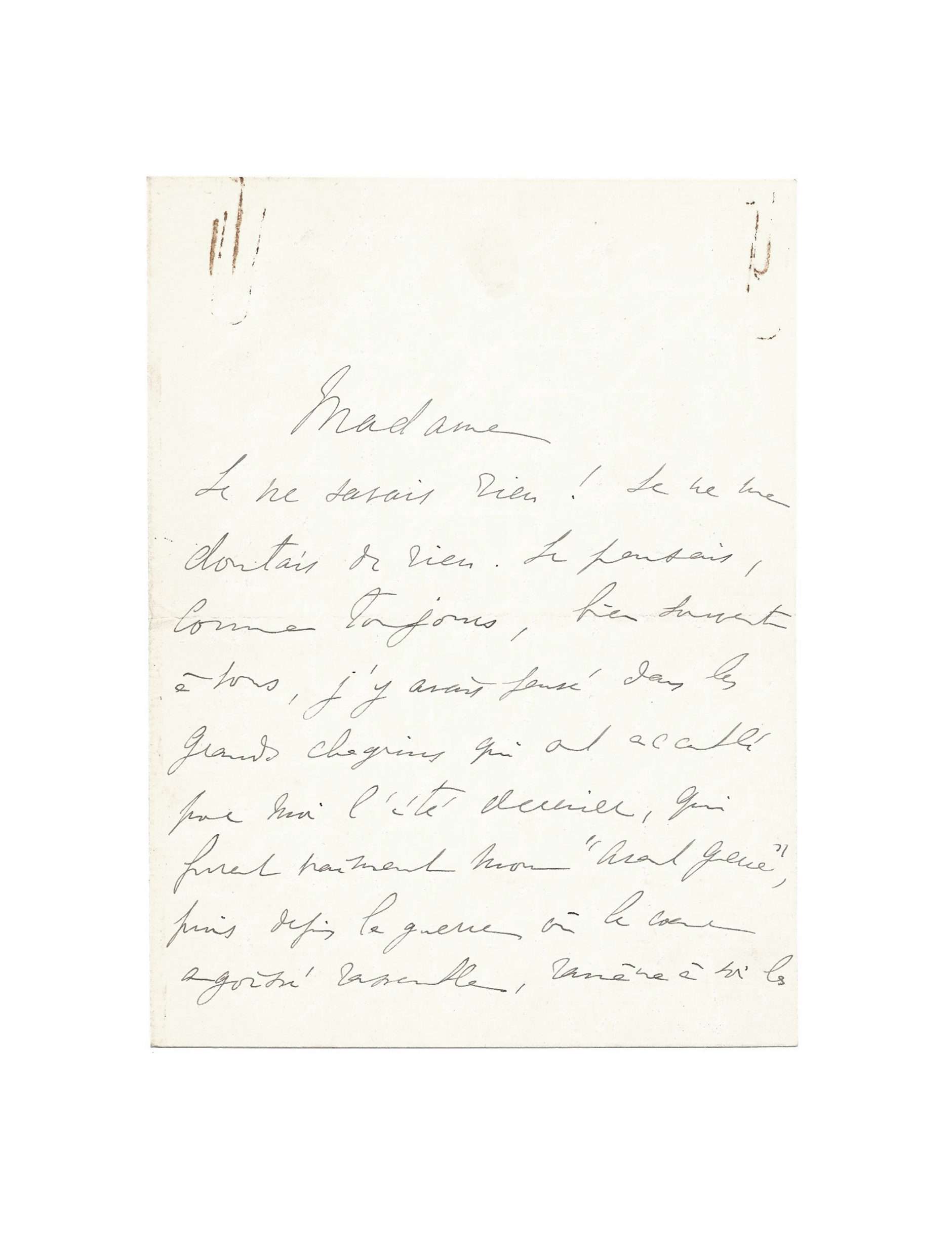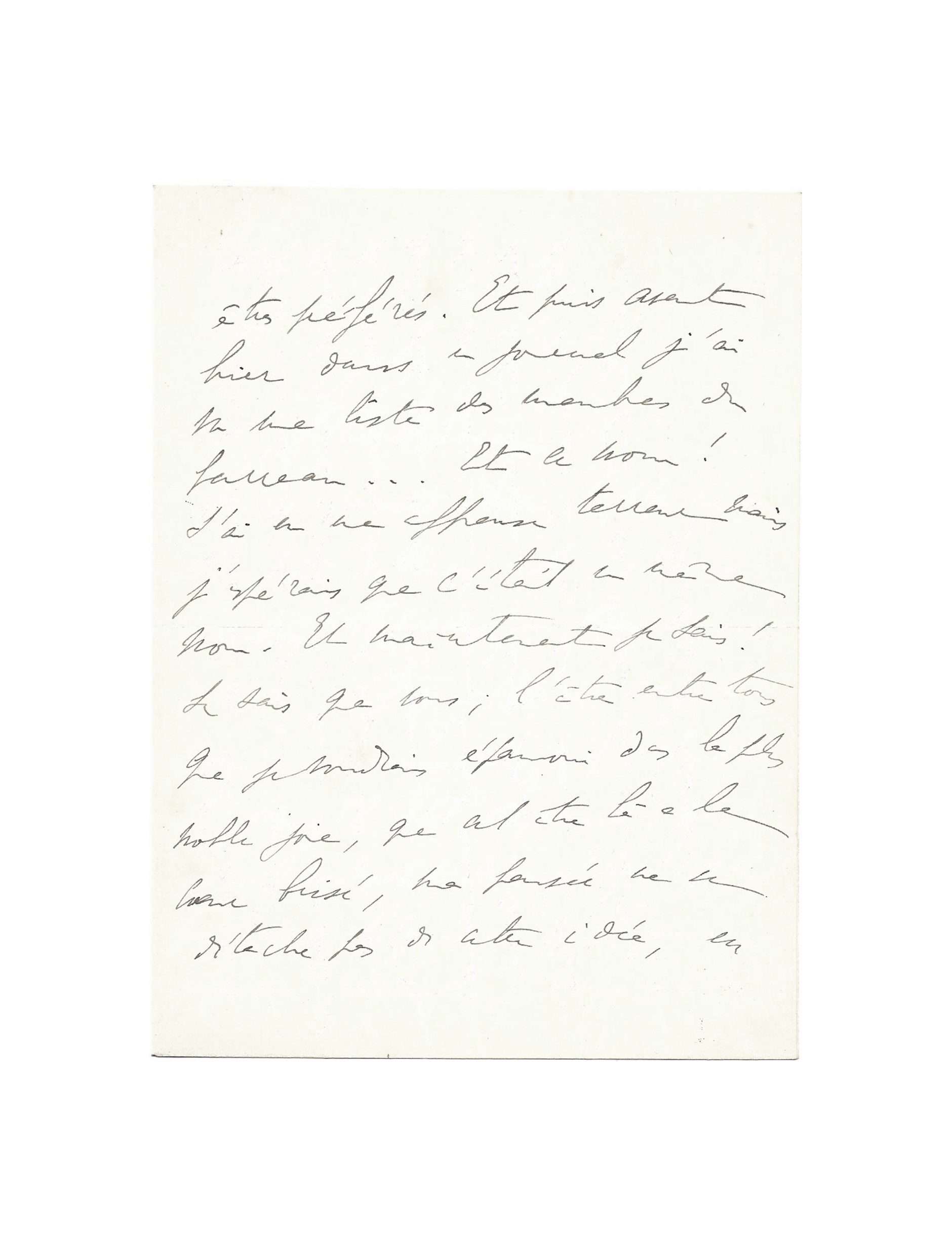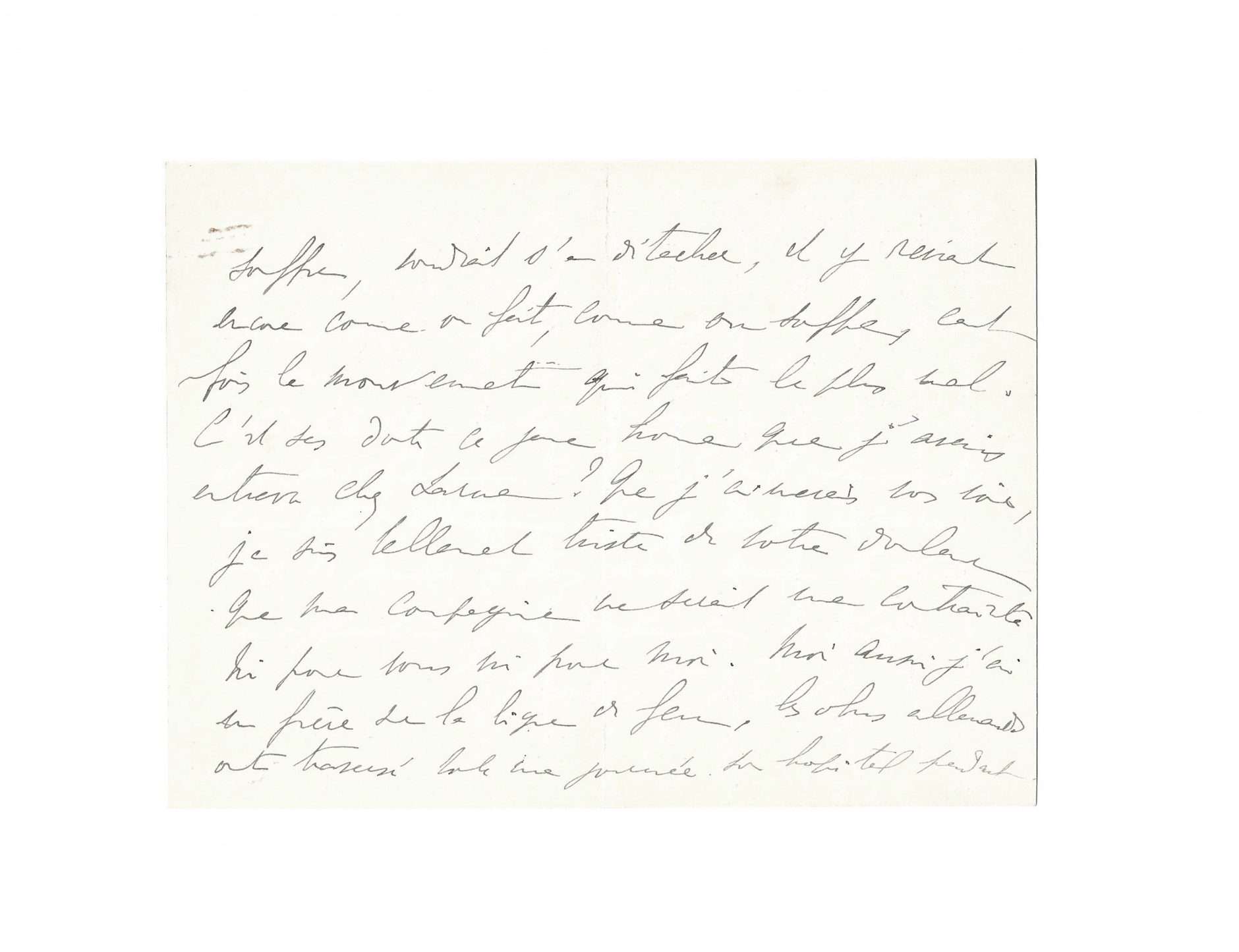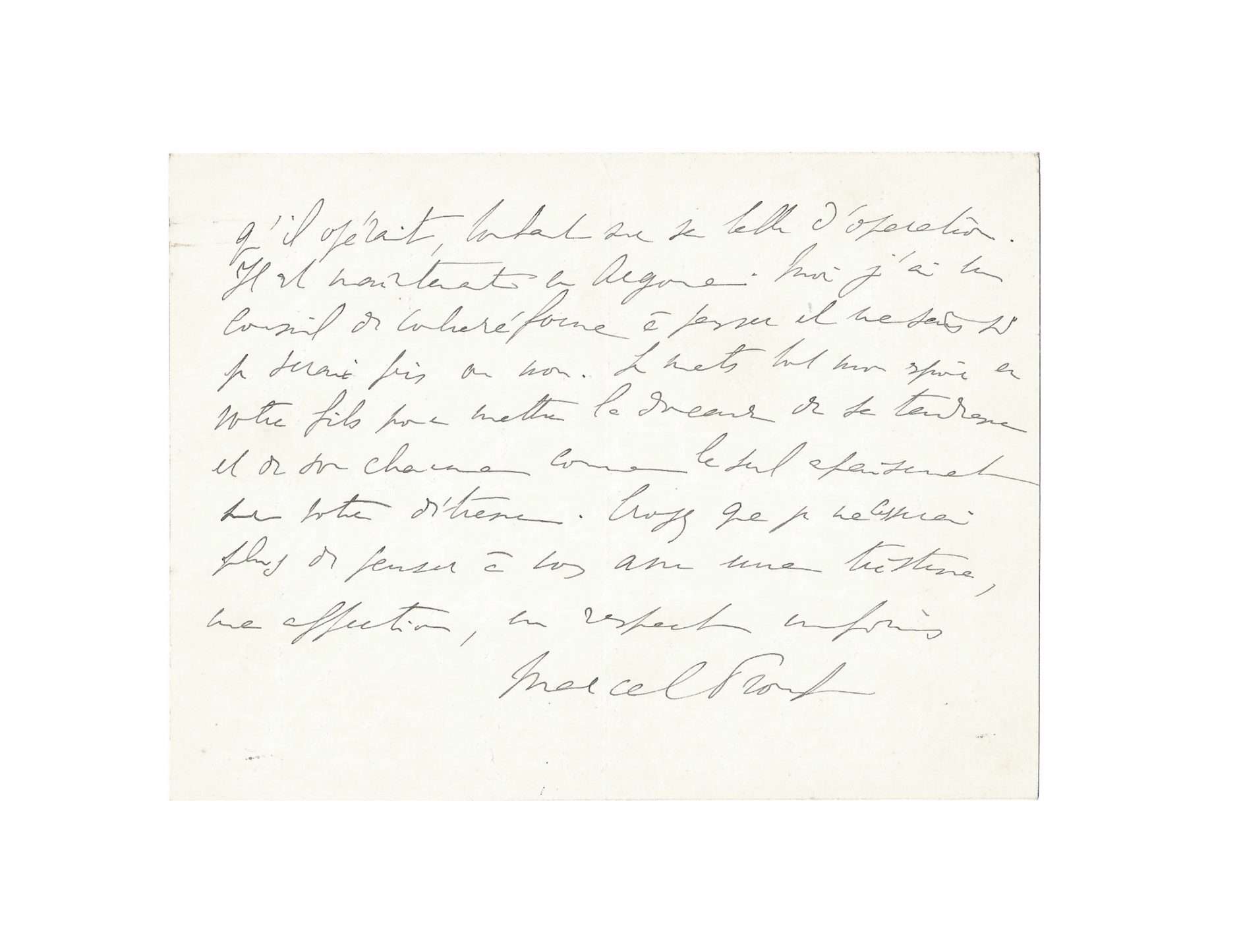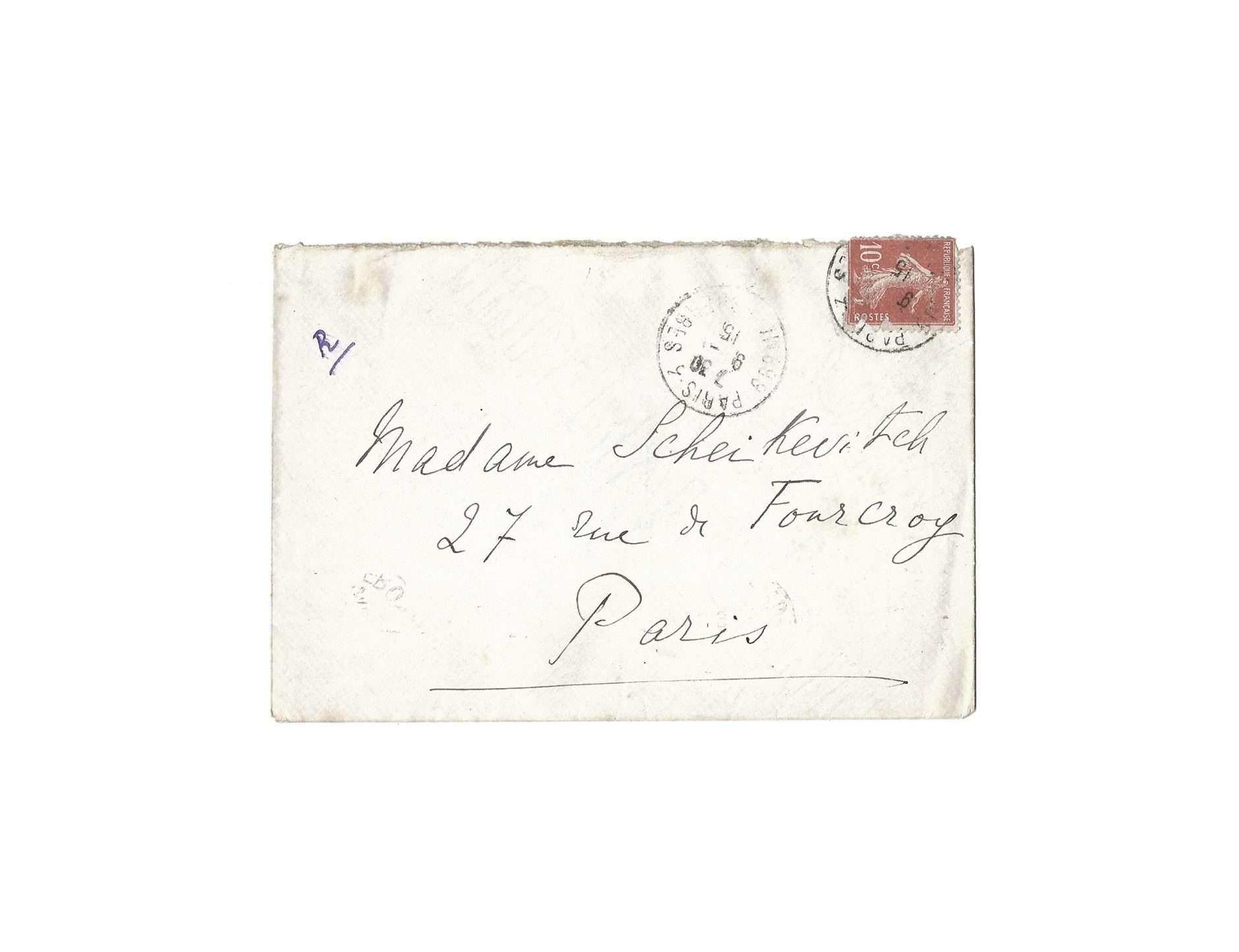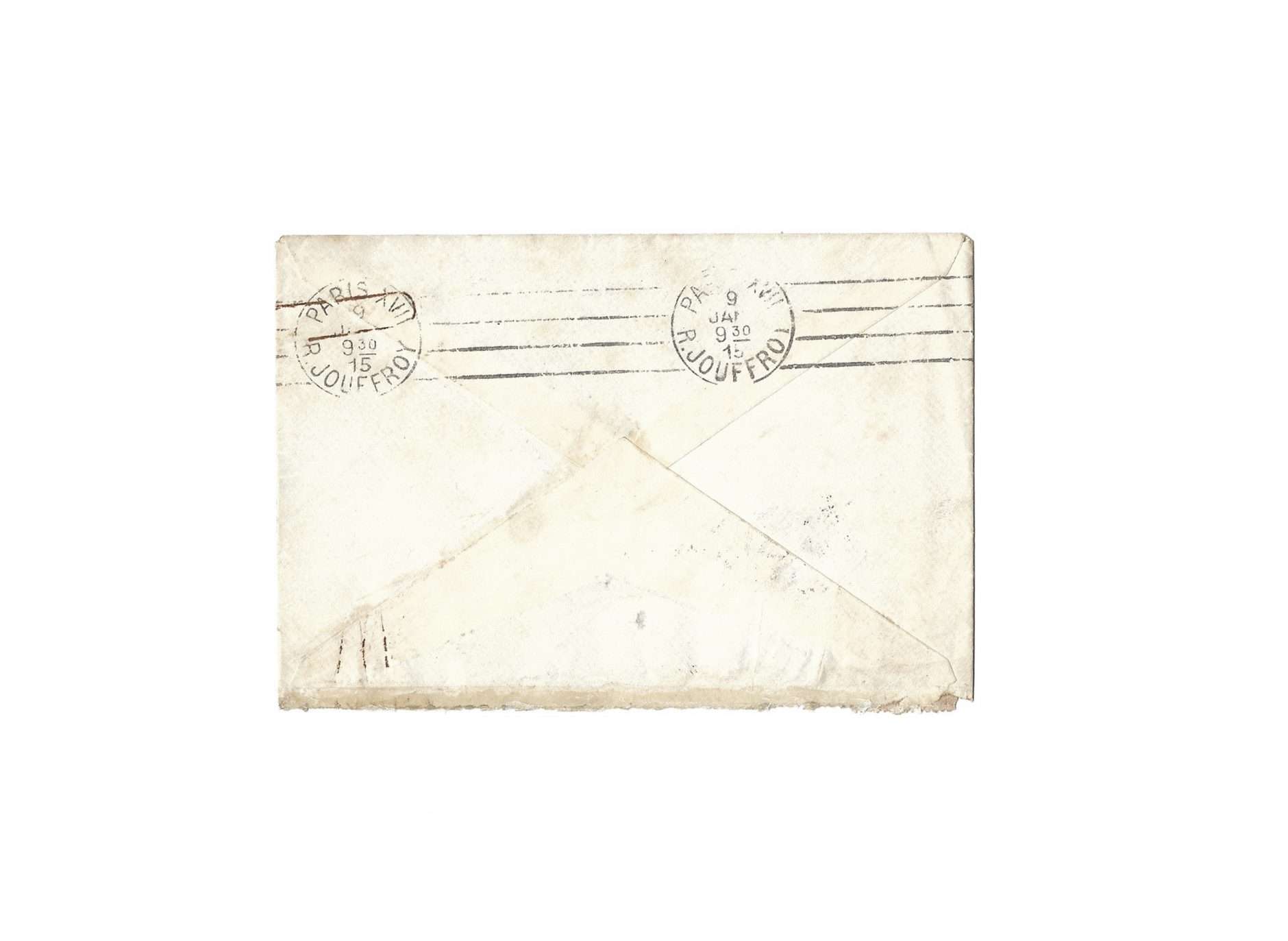PROUST, Marcel (1871-1922)
Autograph letter signed « Marcel Proust » to Marie Scheikévitch
[Paris], 9th January 1915, 4 p. in-8° with envelope
« And now I know. I know that you, the being of all whom I would like to blossom in the noblest joy, that this being is heartbroken »
Fact sheet
PROUST, Marcel (1871-1922)
Autograph letter signed « Marcel Proust » to Marie Scheikévitch
[Paris], 9th January 1915, 4 p. in-8° in black ink, with envelope
Old paper clip marks on upper margin (see scans)
“R” inscribed by Marie Scheikévitch for “Replied”
A moving demonstration of the writer’s grief following the loss of his correspondent’s brother, killed at the front in the early hours of the war – Marcel Proust then evokes his brother Robert, mobilized as a doctor on “the firing line”
« Madame,
Je ne savais rien ! Je ne me doutais de rien. Je pensais, comme toujours, bien souvent à vous, j’y avais pensé dans les grands chagrins qui ont accablé pour moi l’été dernier, qui furent vraiment mon “avant guerre”1, puis depuis la guerre ou le cœur angoissé rassemble, même à soi les êtres préférés. Et puis, avant-hier, dans un journal j’ai vu une liste des membres du barreau… et ce nom ! J’ai eu un affreuse terreur mais j’espérais que c’était un même nom2. Et maintenant je sais. Je sais que vous, l’être entre tous que je voudrais épanoui dans la plus noble joie, que cet être-là a le cœur brisé, ma pensée ne se détache pas de cette idée, en souffre, voudrait s’en détacher et y revient encore comme on fait, comme on souffre, cent fois le mouvement qui fait le plus mal. C’est sans doute ce jeune homme que j’avais entrevu chez Larue3 ? Que j’aimerais vous voir, je suis tellement triste de votre douleur que ma compagnie ne serait une contrainte ni pour vous ni pour moi. Moi aussi j’ai un frère sur la ligne de feu, les obus allemands ont traversé tout une journée son hôpital pendant qu’il opérait, tombant sur la salle d’opération. Il est maintenant en Argonne. Moi j’ai le conseil de contre-réforme à passer et ne sais pas si je serai pris ou non. Je mets tout mon espoir en votre fils pour mettre la douceur de sa tendresse et de son charme comme le seul apaisement sur votre détresse4. Croyez que je ne cesserai plus de penser à vous avec une tristesse, une affection, un respect infinis.
Marcel Proust »
1 – An allusion to the title of Léon Daudet’s book published in 1913.
2 – An allusion, it seems, to the notice published in L’Intransigeant of 5 January 1915, p. 2, under the heading Nos Échos: “At the Palais, in the vestibule that precedes the Library of the Order, the President of the Bar, Me Henri-Robert, has just had a painting placed with a black frame surrounded by tricolour flag (French flag). It is that of the members of the Bar who died on the field of honour.
Forty names, forty already! Among them are those of: Simon Barboux, Victor Scheikévitch, Maurice Bizet, André Bonnet, Paul Proust […] »
It was one of Mrs. Scheikevitch’s brothers, Victor Scheikevich (1885-1914), a lawyer at the Court, who left as a second lieutenant in the 103rd Infantry Regiment, and who fell, a few days after being proposed as captain, on September 15, 1914, at Tracy-le-Val – Le Figaro of January 4, 1915, p. 3, publishes the complete list of the forty members of the bar who died in the war.
3 – Famous restaurant that Proust frequented regularly. It was in this same establishment that he famously encountered for the first time with Bertrand de Fénelon in the summer of 1902. The latter, ignoring what people will say, walked on the benches to fetch Proust’s coat, a friendly episode that he will never forget. Proust transcribes this proof of friendship in In Search of Lost Time.
4 – André Carolus-Duran (1902-1972), son of Marie Scheikévich
An intimate of Proust who did much effort in using her network for the publication of the first volume of The Search :
Marie Scheikevitch (1882-1964) was the daughter of a wealthy Russian magistrate and art collector who settled in France in 1896. George D. Painter described her as “one of the smartest and most prominent ladies of the new generation.” Patron of artists and writers, she frequented salons and then founded her own. She was friends with Jean Cocteau, Anna de Noailles, Reynaldo Hahn, the Arman de Caillavet family, among others.
A feeling of singular quality united Marcel Proust to Marie Scheikévitch. Although they met briefly in 1905 in Mme Lemaire’s salon, it was in 1912 that they really get to know eachother. There followed a correspondence that lasted until 1922, the year of the writer’s death. Seeing each other “almost every day” as she would later say (friends writing all the less as they see each other more), we know only 28 letters from Proust addressed to her.
She opened to him the doors of her salon, frequented by all that Paris had of illustrious personalities in literature and arts, so that he paid tribute to her in Sodome et Gomorrhe under the veil of Madame Timoléon d’Amoncourt, “a charming little woman, of a spirit, like her beauty, so ravishing, that only one of the two would have succeeded in pleasing “.
A fervent admirer of the writer, she spent a great deal at the time of the publication of the first volume of The Search, trying everything to put Proust in touch with the Parisian personalities she considered most capable of helping him. It was she who recommended him to her lover Adrien Hébrard, the influential director of the newspaper Le Temps, to obtain the famous interview of November 12, 1913 by Élie-Joseph Bois, on the eve of Swann‘s publication: This was the first significant article published in the major press and devoted to The Search. To thank her, Proust sent her a major inscription (recently acquired by the BnF) when Swann was published.
Provenance:
Catalogue Andrieux, vente du 12 mars 1928, n°174
Bibliography:
Lettres à Madame Scheikévitch (1928), p. 49 – 50
Correspondance, Kolb, t. XIV, n°3
Marcel Proust II – Biographie, Jean-Yves Tadié, Folio, pp. 391-392
